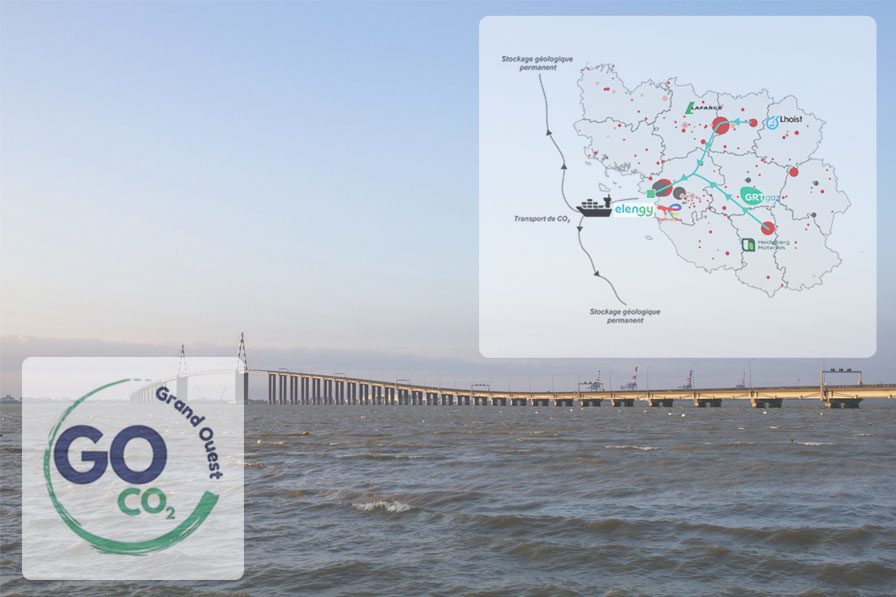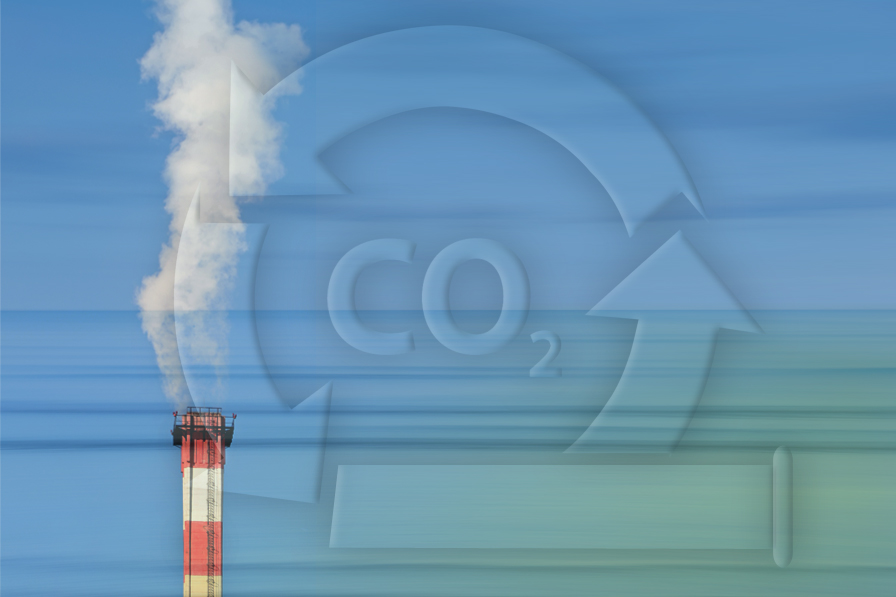GOCO₂

This is another cornerstone of the energy transition. In addition to reducing CO₂ emissions as much as possible and at source, we can now also capture them for recovery or storage. The GRTgaz and Elengy infrastructures have hence joined forces with four industrial companies to launch Grand Ouest CO₂ (GOCO₂). The project aims to capture more than 75% of industrial emissions in the Grand Ouest region by 2050.
Eliminating atmospheric CO₂: a new, necessary measure according to the IPCC
The acceleration of global warming has prompted scientists from the Intergovernmental Panel on Climate Change (IPCC) to expand the field of technologies capable of reducing CO₂ emissions. CO₂ sequestration was once considered secondary to the imperatives of reducing and offsetting carbon emissions. However, it featured in the IPCC’s latest report on achieving the targets set out in the Paris Agreement by 2050. In the wake of this report, Prime Minister Elisabeth Borne launched the French Carbon Capture, Usage and Storage (CCUS) strategy in June 2023 aimed at capturing industrial companies’ incompressible residual emissions. The announcement was followed by the launch in July 2023 of GOCO₂, a project supported by GRTgaz, Elengy, Total Energies, Heidelberg Materials, Lafarge and Lhoist.
GOCO₂ falls under the French Environment and Energy Management Agency’s (ADEME) Low-Carbon Industrial Zones Call for Projects (ZIBaC). It aims to react to the climate emergency, while providing new outlets for industrial companies in the Pays de la Loire, Brittany and Nouvelle Aquitaine regions.
Grand Ouest CO₂: an unprecedented decarbonisation project
This vast decarbonisation project aims to transport 2.6 million tonnes of CO₂ by 2030 and up to 4 million tonnes per year by 2050, i.e. more than 75% of the Grand Ouest region’s industrial emissions at this time. This is Western France’s largest decarbonisation project in terms of volume of CO₂ captured and transported! “For GRTgaz, the project’s main goal is to promote and support the decarbonisation of French industry by setting up a CO₂ transmission network, built and operated by our teams, which is open to all customers,” explains Laurent Muzart, Development Project Manager at GRTgaz. In practical terms, the pipeline will transport CO₂ to the Saint-Nazaire export terminal. Here, Elengy will take over to liquefy the CO₂, which will then be transported by boat for burial in dedicated underwater storage sites.

“This is a technically and economically efficient solution for industrial companies who want to reduce their CO₂ emissions. By capturing this level of harmful emissions, GOCO₂ supplements existing actions aimed at avoiding and reducing CO₂ emissions. It is therefore a strong indicator both for decarbonisation and for the sustainable continuation of industrial activities that are vital to the region. In the long term, these new infrastructures will also give rise to the development of a CO₂ recovery sector.”Laurent Muzart
Project Manager in charge of developing GOCO₂ at GRTgaz
Who is involved in this project and what are their roles?
GOCO₂ brings together industrial companies whose processes emit CO₂ (cement manufacturers, refineries, lime producers, etc.), as well as infrastructure operators (GRTgaz for gas transmission and Elengy for liquefaction). “Some of our partners have been present in the Grand Ouest region for more than 70 years,” stresses Laurent Muzart. “Our network opens up prospects for new uses, such as connecting customers to consumers seeking to use CO₂ in their processes.” GRTgaz’s role is to provide its technical skills and human resources to carry out the preliminary studies, as well as the operation and operational management of the network. “We will take all necessary measures to ensure that this 350 km infrastructure, which crosses several departments and municipalities, is managed safely, with clear and transparent access conditions for our future customers,” explains Laurent Muzart. “Beyond the impetus of the various members of the GOCO₂ consortium, the Pays de Loire region played a pivotal role in making the project official and giving it national visibility for other stakeholders, with the support of ADEME and the Grand Port Maritime de Nantes Saint-Nazaire.”
And now: all hands on deck for 2030!
The GOCO₂ project is on track. In 2023, GRTgaz launched feasibility studies to identify the first general trends in terms of routing and technical and administrative constraints. A market consultation phase should begin in 2024 to target future partners interested in connecting to a shared network for their industrial operations. Depending on results, these studies will be ongoing, with the involvement of GRTgaz and its partners for the construction and commissioning of the GOCO₂ network by 2030.
To go further

The launch of GOCO2
